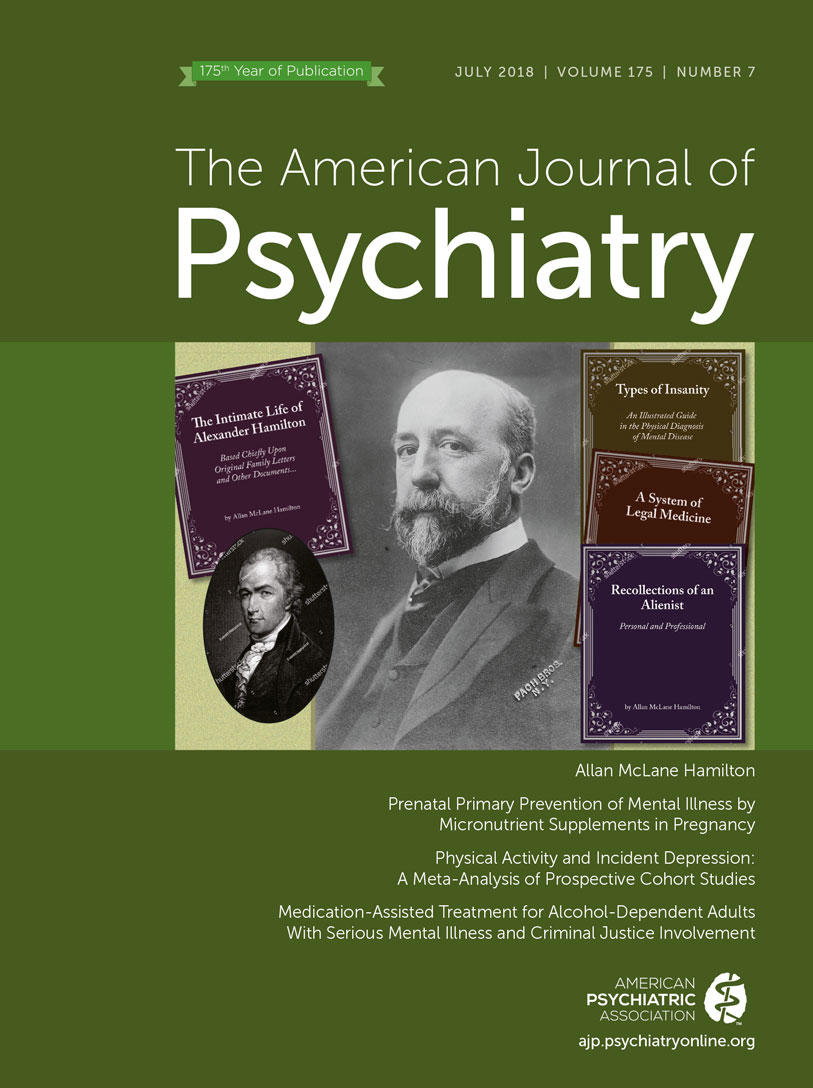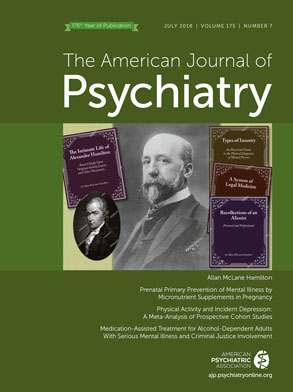Borderline personality disorder, a debilitating personality disorder characterized by a range of features associated with emotional dysregulation, including affective lability and hyperactivity in response to emotional stimuli, impulsivity, dissociation, suicidal ideation, and difficulties with interpersonal relationships, affects up to 2.7% of the U.S. adult population (
1). Psychotherapy treatments for the disorder can be helpful in promoting symptomatic remission and good psychosocial functioning when targeted appropriately, although this is difficult to attain in a sizeable proportion of patients (
2,
3).
Identifying functional abnormalities in neural activity underlying cognitive processes that are known to be aberrant in individuals with borderline personality disorder is an important next step to provide objective neural markers to enhance the effectiveness of treatments for individuals with the disorder. For example, a more nuanced understanding of the neural mechanisms of the disorder could help identify specific underlying neural processes for treatments to target. In addition, the degree of normalization of neural abnormalities during treatment could help determine in the future whether a particular treatment is effective for a given individual with the disorder.
One theory proposes that borderline personality disorder is characterized by delayed—or deficient—habituation of behavioral, and underlying neural, responses to salient negative emotional stimuli and events (
4). A related theory proposes abnormal sensitization to such stimuli and events, whereby these stimuli continue to be perceived as aversive for longer periods of time after desensitization procedures, such as extinction, in individuals with borderline personality disorder compared with healthy individuals. Yet, although there is some evidence in favor of the deficient habituation theory based on a study of individuals with borderline personality disorder (
5), no study examined neural and behavioral responses to repeated presentation of salient emotional stimuli over time in this psychiatric population.
In this issue of the
Journal, Denny and colleagues (
6) sought to distinguish between these two related theories of borderline personality disorder in a well-designed neuroimaging study, in which repeated negative emotional and neutral images were shown to adults with borderline personality disorder, healthy control adults, and a psychiatric control group of adults with avoidant personality disorder. The authors developed a specific task in which images depicting scenes of negative emotional and neutral social interactions between two or more people were shown five times each during two sessions 3 days apart. The authors examined behavioral responses, as measured by self-reports of negative affect, as well as activity in three key neural regions in the salience network, comprising the amygdala, anterior insula, and dorsal anterior cingulate cortex, regions subserving emotional, interoceptive processing (
7,
8) and directed attentional processes. Salience network activity and self-reports were measured over both sessions in each participant group.
The key finding of the study was that while all participants showed habituation of salience network neural activity within each session in response to negative emotional images, only the borderline personality disorder group showed an increase in activity in this neural network between sessions, and less habituation of self-reported negative affect from the first to the second session in this group compared with the two other groups nearly reached statistical significance. Furthermore, abnormal sensitization of salience network activity in response to negative social scenes was positively associated with the degree of abnormal behavioral sensitization to these images (i.e., negative affective ratings) from the first to the second session. Abnormal sensitization of neural activity was also evident for neutral images in the borderline personality disorder group, suggesting that individuals with the disorder may perceive negativity in, and sensitize to, otherwise neutral social situations. Individuals with borderline personality disorder also had greater negative self-reports for neutral images from the first to the second session compared with the other groups, indicating an abnormal behavioral sensitization to these otherwise neutral social scenes. Thus, the authors provide evidence that borderline personality disorder, rather than being characterized by deficient habituation in response to negative emotional stimuli, may instead be characterized by abnormal sensitization to salient stimuli, such that behavioral, and underlying neural, responses are augmented to repeated presentation of these stimuli over time (see
Table 1).
The most innovative aspect of the study was the longitudinal design incorporating two assessments of neural and behavioral responses to repeated presentations of negative and neutral socially relevant images. The design thereby allowed examination not only of habituation of neural and behavioral responses during each session, but also examination of habituation and/or sensitization of these responses between sessions. As a result, the authors were able to show, for the first time, that borderline personality disorder is characterized by deficient habituation and abnormal sensitization of behavioral and salience network neural responses to socially relevant images over a period of days, a longer time period than the focus of previous neuroimaging studies of individuals with the disorder. Another major strength of the study was the inclusion of a control group of individuals with avoidant personality disorder, who share some of the characteristics of individuals with borderline personality disorder, especially hypersensitivity in response to negative evaluation. By showing that individuals with borderline personality disorder differ from both healthy control subjects and individuals with anxious avoidant personality disorder on patterns of sensitization of neural and behavioral responses to socially relevant images, the authors identify a set of neural and behavioral characteristics that are specific to borderline personality disorder and not shared with other personality disorders.
There were some features of the study that need further exploration. In particular, exploratory analyses revealed that individuals with avoidant personality disorder with comorbid social phobia were similar, although not identical, to those with borderline personality disorder in their pattern of salience network sensitization to negative emotional social images. There was a striking laterality effect, whereby the between-session neural sensitization effects in individuals with borderline personality disorder were focused on the right hemisphere. As the authors note, a more nuanced explanation of these findings is needed and should be the subject of future studies.
The study has important implications for treatment, including psychotherapy. For example, some interventions for borderline personality disorder involve revisitation of salient, negative emotional events in attempts to desensitize responses to these events (
9,
10). If the disorder is characterized by abnormal sensitization to these events over longer time periods rather than by deficient habituation of emotional responses within a given shorter time (e.g., a therapy session), then it is possible that desensitization during a given therapy session will be an ineffective intervention. Moreover, this type of intervention might exacerbate levels of emotional lability and dysregulation in response to salient negative events at future treatment sessions. Instead, psychotherapy interventions could use strategies that help to counteract abnormal, longer-term sensitization processes by, for example, helping individuals with borderline personality disorder develop emotional regulation skills and use these skills proactively in anticipation of future aversive events. The findings from the research also point to neural targets that could be used to guide the development of novel neuromodulation interventions for individuals with borderline personality disorder.

